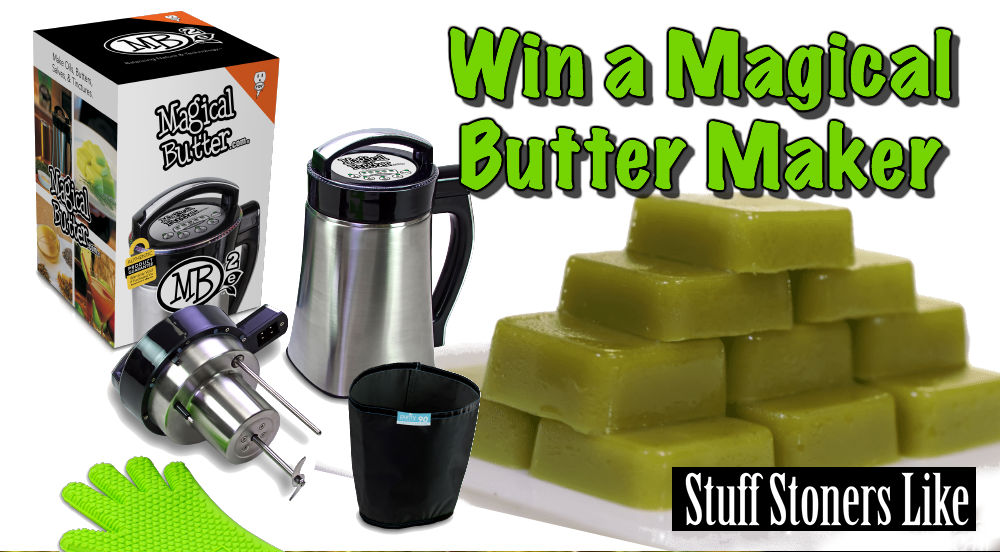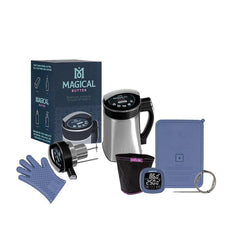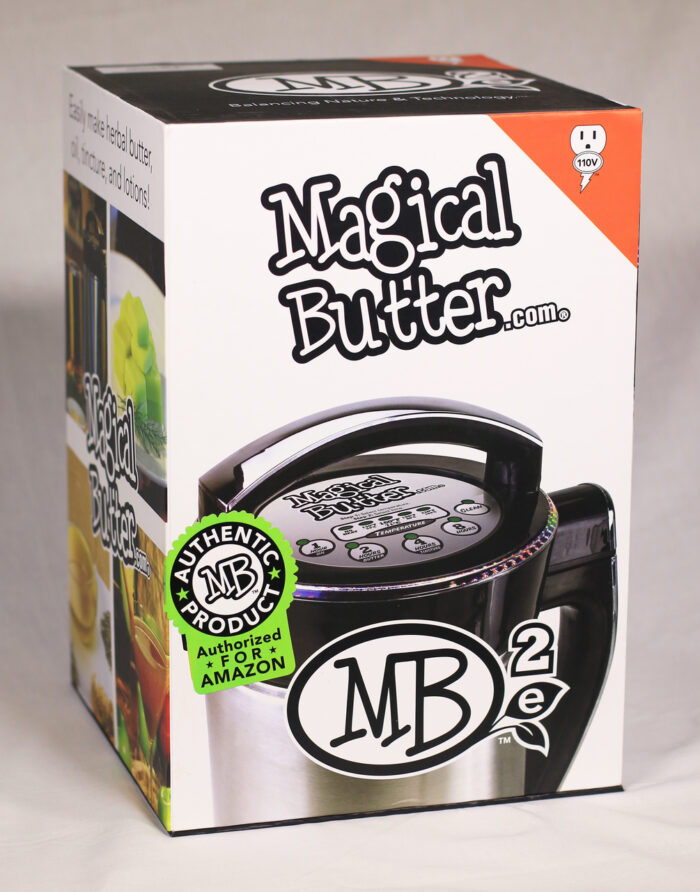
The amount of active ingredients in your herb will decrease due to oxidation. Be very careful in handling the frozen product because trichomes will fall off easily and you may lose them. To freeze trichomes after decarbing, let your bud cool for an hour, cover it, then put it into your freezer for 24 hours. As part of the decarbing process, you can enhance access to these compounds and potentially increase extraction if you expose them to freezing temperatures. Most essential oils, terpenes, and psychoactive chemicals are found in the hair-like protuberances on the leaves and buds of your plant called trichomes. Take note of the areas that have medium toast levels – this is where you want to put your container the next time you decarb. Where your oven is hotter, the bread will be darker in how much it is toasted. Once some slices are getting toasty brown (about 15-20 minutes), remove the racks and examine the bread.
Magical butter machine decarb how to#
If your oven is consistently too hot or too cold, consult your oven manual to find out how to change the calibration.

If it is more than 20° F above or below your temperature, your oven may be calibrated to the wrong temperature. To see how accurate your oven’s thermostat is, use a secondary thermometer to check it several times once it reaches a target temperature. Some ovens are off the target temperature not because of heat cycles but because they are incorrectly calibrated. To fight this variability, put your herb in an oven-safe enclosed vessel which will provide insulation and more consistent temperatures like a DecarBox. You want the most consistent temperature in your oven in order to control the conversion of active ingredients in your herb but that temperature can often be off by up to twenty degrees in either direction! When you set an oven to a temperature like 250° F, it is programmed to go above that target temperature by twenty degrees and then slowly cool to twenty degrees below the target temperature before the heat comes on again. If you’re using an oven to heat your herb, it’s a good idea to test your oven temperature. In our Beginners Guide to Decarboxylation, we suggest decarbing at 250° F for 30 minutes. At higher temperatures, you increase the risk of denaturing your active compounds through oxidation and creating a sedative effect. What is the best temperature for decarbing?īetween 230° F to 266° F is the ideal range for decarbing. At lower temperatures, you may get incomplete conversion and oxidation. The best ways to start making gains are by optimizing the time and temperature of decarbing, calibrating your oven, freezing trichomes, and controlling oxidation. If you decarb in a home oven and use efficiency-boosting techniques, you can consistently reach 70% or better. Studies indicate that under standard smoking conditions, the efficiency of conversion due to decarboxylation ranges from 30-70%. With a potential loss of up to 70%, that’s a lot of money going up in smoke! This is one of the many reasons why people choose to do a separate decarb and use edibles instead of smoking. The main reason for decarbing is to get more potency out of your herb, so you don’t have to buy as much to get the same buzz.

How to decarb more efficiently/improve conversion

How to release less aromas while decarbing.How to decrease or increase the herbal flavor to suit personal taste.How to get better conversion rates of psychoactive compounds.Yes, any beginner can toss bud on a cookie sheet and put it in the oven for an hour, but if they do it incorrectly, they can lose potency, fill their house with dank aromas, and have inadequate herbal flavors.Īll of these errors can be prevented with the advanced techniques we share in this guide.

Advanced Decarboxylation Techniques Make stronger edibles, preserve terpenes, and save moneyĭecarboxylation at home is easy to do, but tricky to master.


 0 kommentar(er)
0 kommentar(er)
